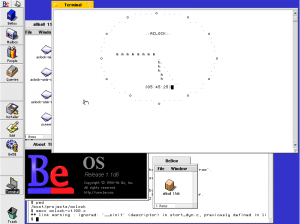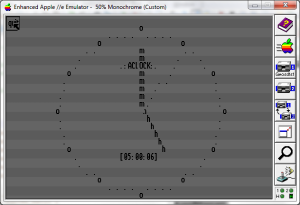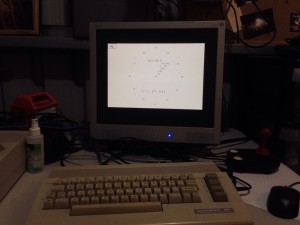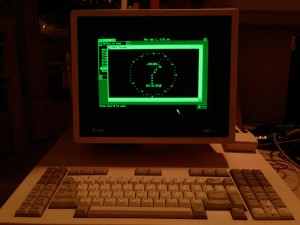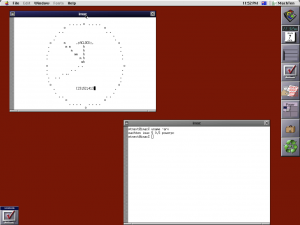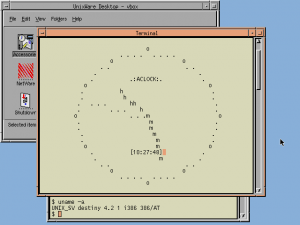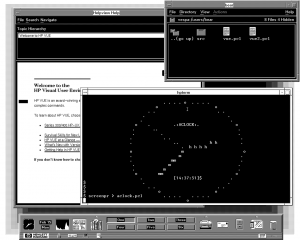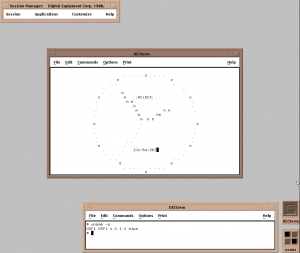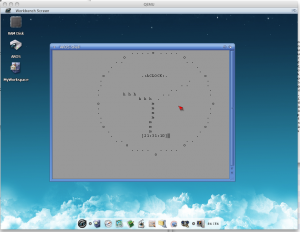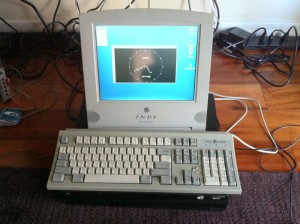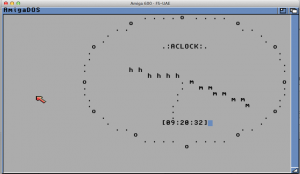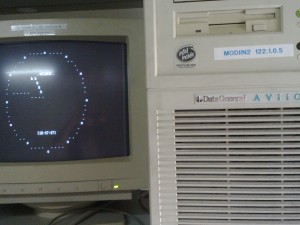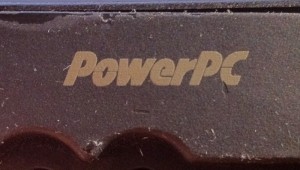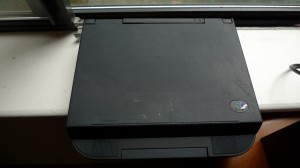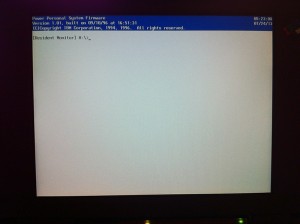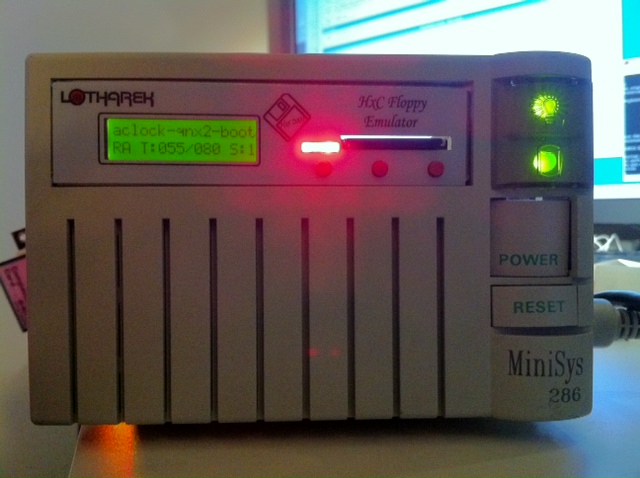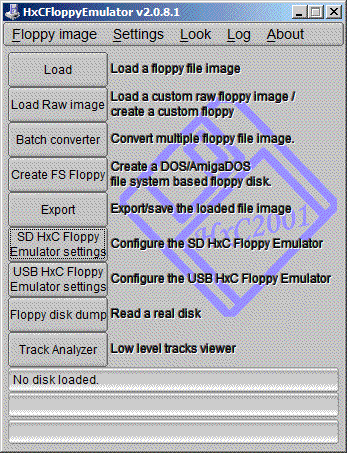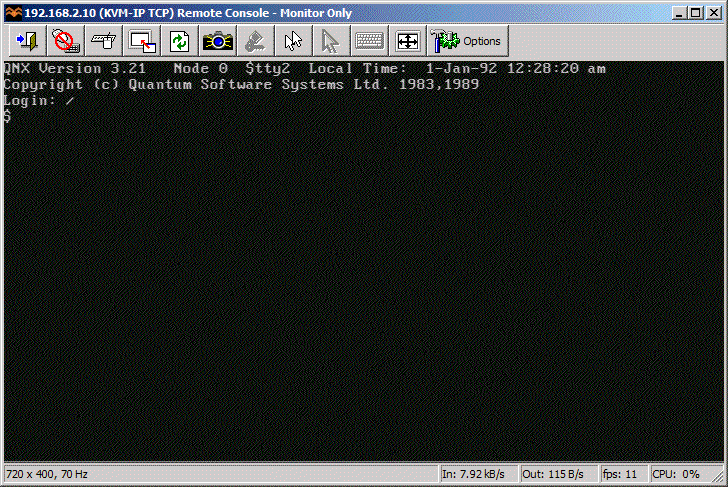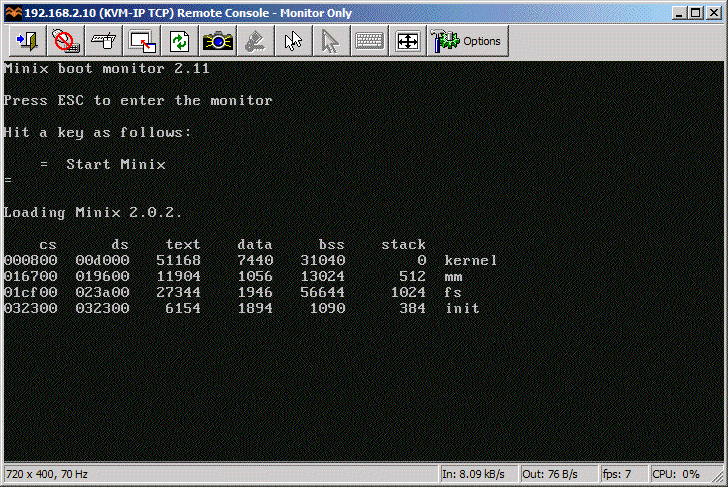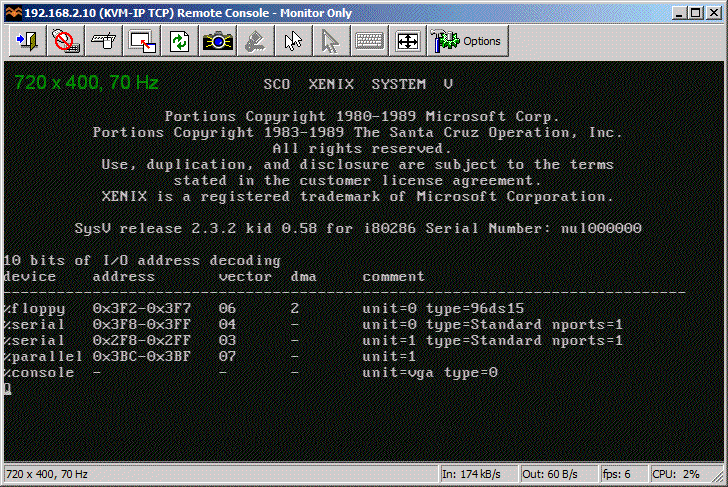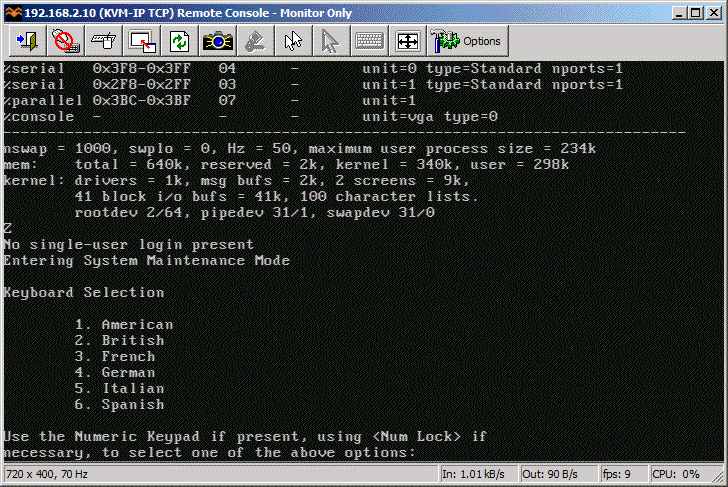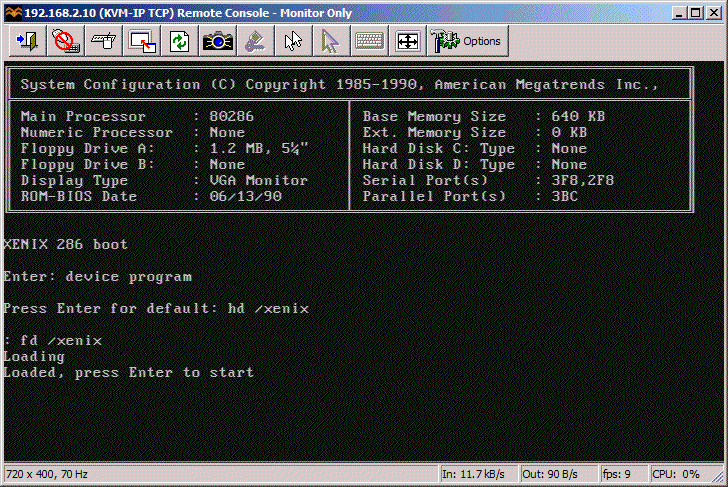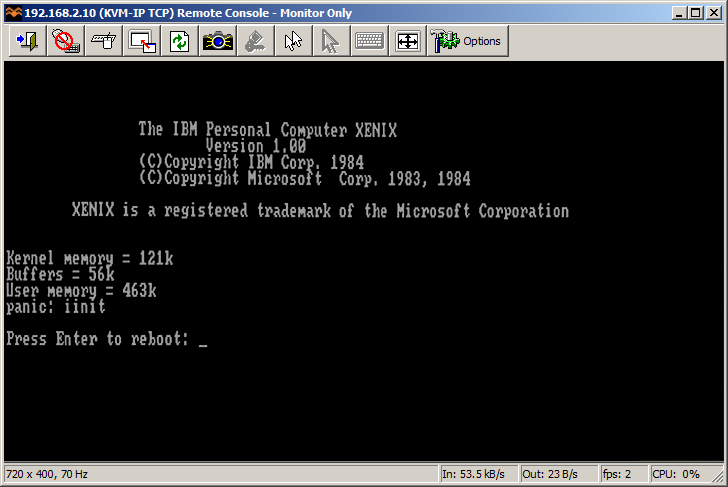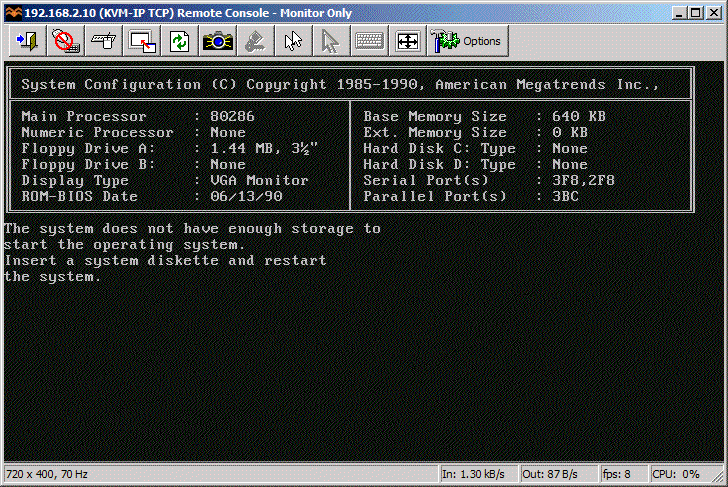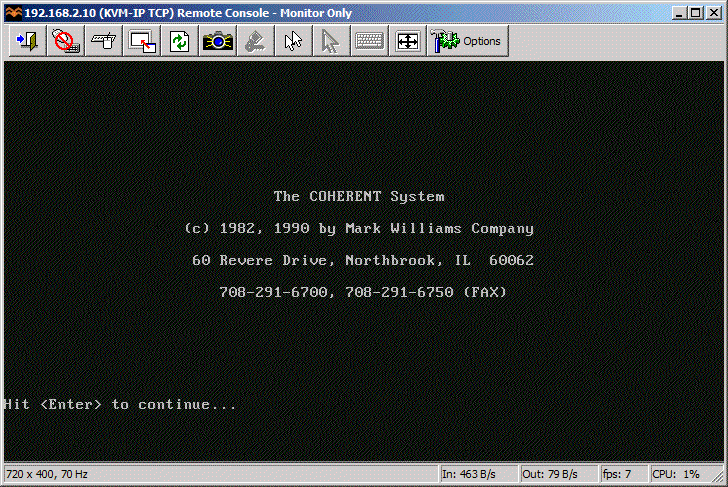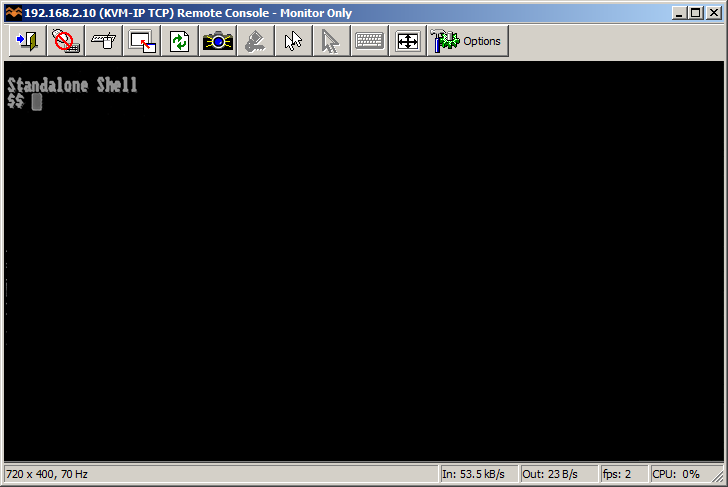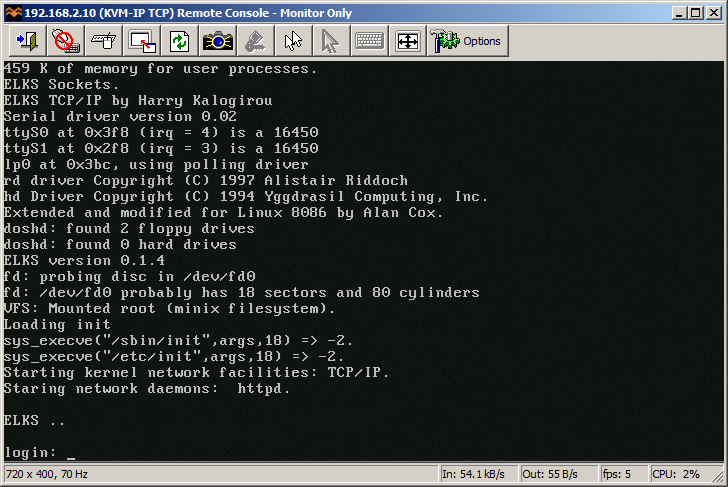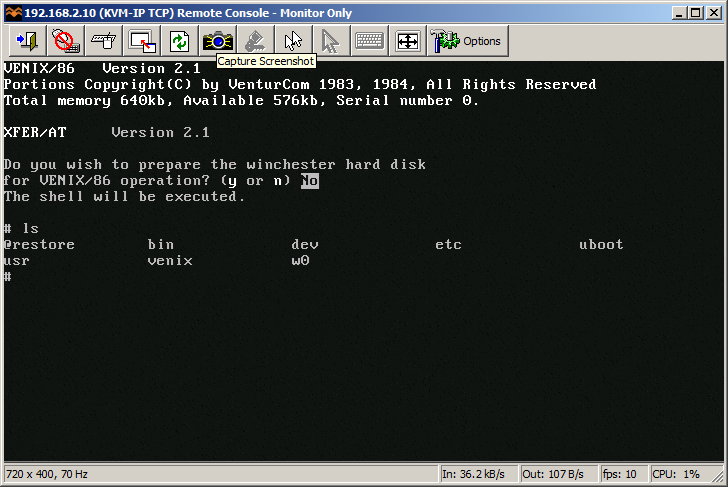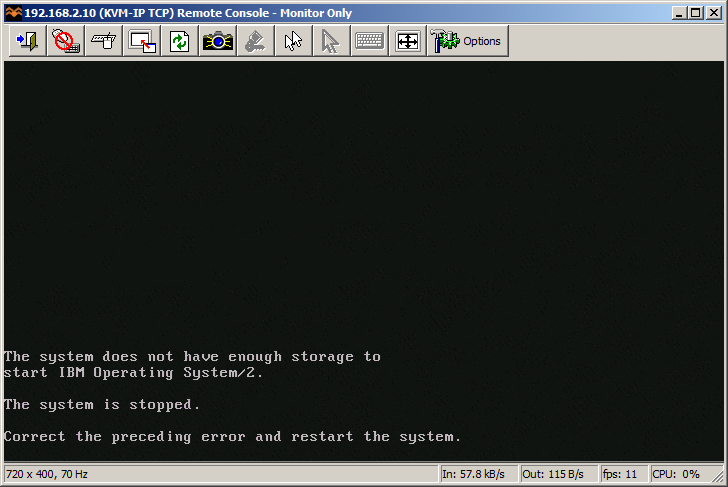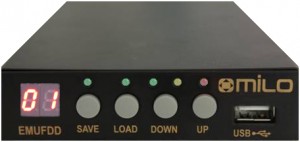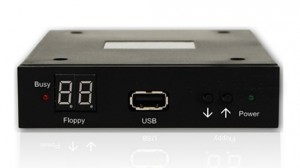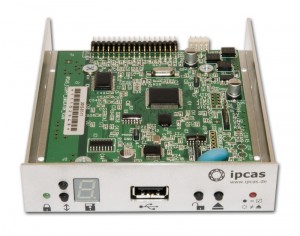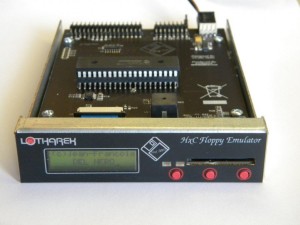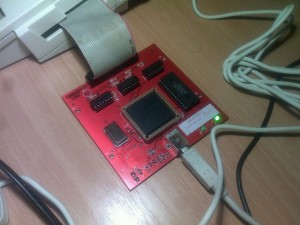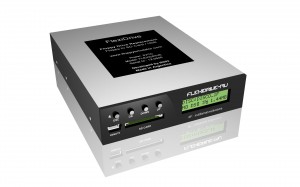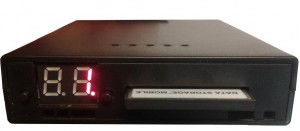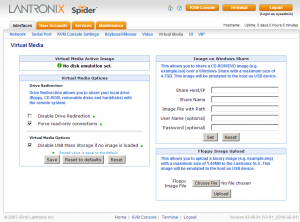(this is a guest post from Tenox)
This is a continuation of my another post where I do a high level overview of different Floppy Disk Emulators. Gotek is one of them but from various research I have done before buying it I antcipated it will be the worst. Unfortunately the claims turned to be true.
The emulator arrived by FedEx earlier on today. It only took two days since the order, which is excellent, but unfortunately this was the only good thing about Gotek.
The FedEx bag looked like it has been used by at least 5 previous shipments and has already circled the globe few times. The inner package was even worse, a bit of old bubble wrap taped together with the unit and unpacked cdrom. Disgusting!
The unit itself looks rather good, they have made a better looking self adhesive front panel label.
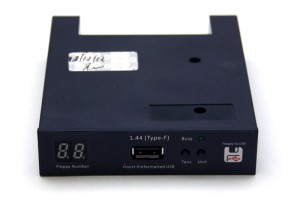
I went to replace my original 1.44MB floppy drive with Gotek. First roadblock that I encountered was the fact that the emulator is about an inch shorter and the original floppy cable did not reach so I had to improvise. The unit powered on so I went on to the documentation and software.
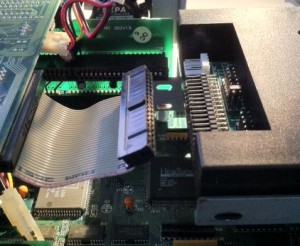
Documentation is absolutely horrible. Written in Engrish is rather hard to understand, however invaluable because without it you will not be able to figure out how to use the software. Looks like they are aware of the software limitations because the documentation is full of workarounds and troubleshooting.
The software is even worse. It only works on Windows XP / 2000, so I had to run it inside VMware Workstation with USB pass-through It actually did work but usability is similar to RiscOS or Plan 9. Here is a photo from one of the manual pages that illustrates both the documentation and the application itself.
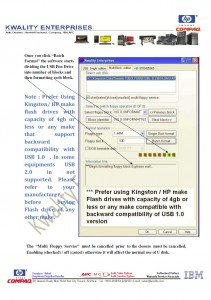
So how does it actually work? Here is a small excerpt from the user manual: “We will divide a pen drive into 100 partitions of 1.44 mb capacity each.” – err what? That’s right, this is what they are doing. Dividing a pen drive to small partitions and multiplexing them so that you see one at a time. You select the partition using the buttons on the front panel or from the software. When you switch the floppy drive will be mapped to another partition. On the host computer you can see it as a removable drive in Windows Explorer.

Gotek has promised me that the Type-F will support non-FAT and bootable floppy disks. So I started testing with writing QNX2 aclock demo floppy disk using ntrawrite.
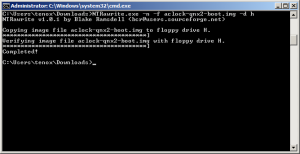
The system has completely freaked out and went to an error mode. Fortunately described in the troubleshooting guide, however requires full reformatting. Now imagine rewriting 100 floppy disks stored on the unit… I spent hours trying to figure what is going in. What I think is that the non-FAT bootable disk can only be used in “singular mode” where you store just a single floppy disk image on the pen drive. What a waste, but it did work and in the end I did boot QNX2 on my 286 from a pen drive.
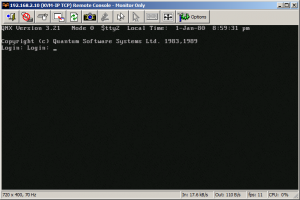
The next test was trying to boot Xenix from emulated 1.2MB 5.25″ drive. I have re formatted the singular drive to 1.2MB and switched it in the bios. However the system never actually loaded.
When it comes to FAT compatible operating systems like MS-DOS or OS/2, you can actually boot and use multiplexed floppies. You can install MS-DOS 6.22 by flipping the selector to change disks. Pretty cool. I was also able to run BIOS built in floppy disk diagnostics.
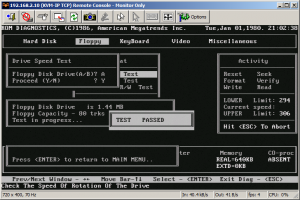
So the device sort of works. I was able to boot a non-DOS operating system and for DOS based floppies I was able to hold more than one disk per USB key. However the whole experience was rather horrible. The verdict:
- Packaging: garbage
- Usability: garbage
- Software: garbage
- User manual: garbage
- Compatibility: garbage
- Total: garbage
So in short do not waste your time with this. Do not buy Gotek unless you absolutely have to.
I’m still awaiting for arrival of HxC, however it appears to be stuck in Polish Post Office, probably due to the holiday season.
Update: EMUFDD has provided me with a link to their page that lists all Gotek-like cheap Chinese and Indian made devices – with a warning how bad they are. They are claiming that German Ipcas also sells Gotek like devices, so I will be updating my previous post.

